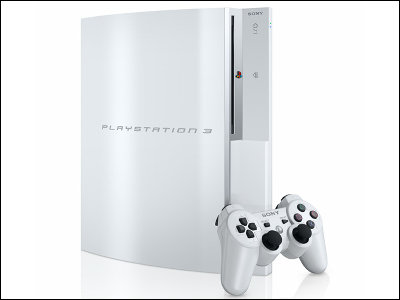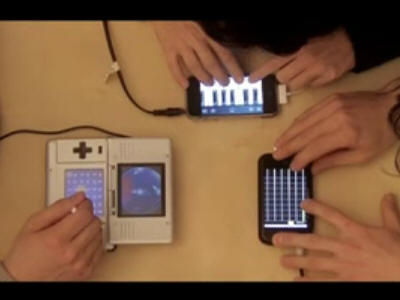A Bluetooth device that connects to an expansion slot that was not actually used on the overseas version of the Famicom has been released

After 39 years since its release, the overseas version of the Family Computer 'Nintendo Entertainment System (NES)' has released the 'NES HUB', a device that uses the expansion slot on the bottom of the NES. By inserting the NES HUB into the expansion slot on the bottom of the NES, it becomes possible to connect wireless controllers via Bluetooth, and it also becomes possible to play background music using expansion sound sources that were not possible with the NES.
RetroTime NES HUB Bluetooth for NES
The NES Expansion Port Is Finally Emerging From The Darkness. Why Now?
https://tedium.co/2024/12/02/nintendo-expansion-port-history/
Nintendo NEVER Used This Expansion Port, So Modders Did - YouTube
The Famicom sold in Japan had an expansion slot at the front of the console.

It was possible to connect third-party controllers here.

On the other hand, NES consoles sold overseas have been replaced with dedicated ports.

The expansion slot was tucked into the bottom of the NES.

Additionally, the standard model is covered in plastic and cannot be opened without tools.

The first full-scale hardware to utilize this expansion slot was the 'NES HUB,' released in October 2024.
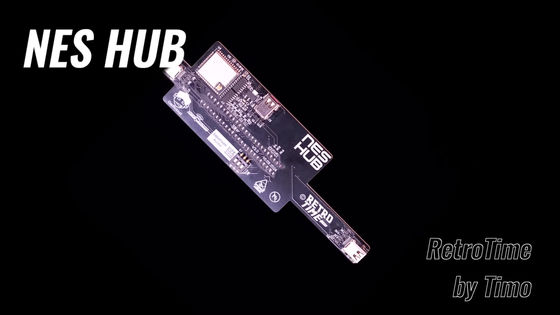
It is designed to fit the expansion slot standard, and by connecting it, you can link controllers via Bluetooth, etc. It also has the feature of being able to access the expansion sound source of the Disk System title.
The only sound source signal input on the NES is via the expansion slot on the bottom, not the cassette terminal, so for Disk System titles or titles with built-in expansion sound sources on the cassette, the NES version only plays background music using the built-in sound source. Another advantage is that by connecting the NES HUB to the expansion slot, it becomes possible to play background music using the expansion sound source, which was not possible on the NES.
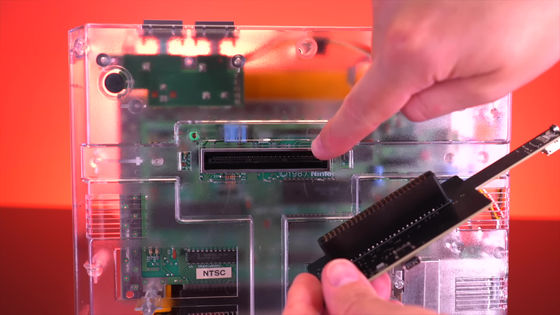
This is what it looks like when installed.
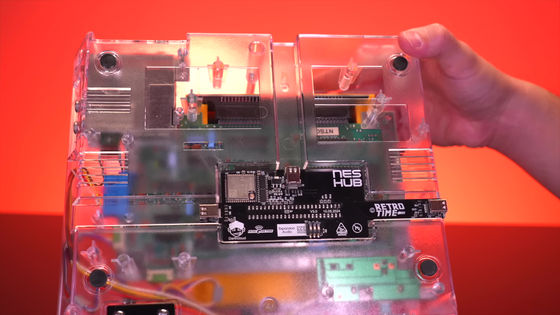
The NES HUB is available for $59.97 (approximately 9,200 yen). According to Tedium, inspired by the NES HUB, an expansion slot adapter that allows the NES to run the Famicom Disk System was subsequently released.
When asked why the expansion slots of a game console released in 1985 were used in 2024, Tedium points out that there was 'not much need to use them.'
The expansion slot was not used because many of the NES's functions could be accessed through other ports, such as the cartridge slot. For example, if you wanted a wireless controller, you could use the controller port, and if you wanted advanced functions such as the CPU and image processing unit, you could use the cartridge slot. Also, the cartridge slot was larger than the board, so it was convenient to design a modding tool to fit the cartridge slot. In fact, several tools that used the expansion slot were devised, but none of them were realized and disappeared.
The NES itself has been heavily modified, with the Game Genie peripheral, which executes cheats via the cartridge slot, and the Power Pad, a floor mat controller that connects to the controller port, but all of these use exposed ports. In addition, the Japanese version of the Famicom officially includes a variety of tools, such as an external disk drive, a BASIC keyboard, and a karaoke microphone.
Tedium believes that the fact that modding tools have finally begun to appear in 2024 is due to the fact that 'an environment that makes it easy to make your own PCB, like PCBWay , has been established.' In other words, it is because the path to making a product that runs something using an expansion slot has become easier than before. In addition, the influence of knowledge being consolidated among the community is also significant.
There are other examples of unused expansion slots besides the NES, such as the Super Nintendo. For example, the Virtual Boy, which was intended to enable multiplayer between different Nintendo game consoles but was discontinued without any official tools, the NINTENDO64, which was meant to be compatible with devices sold outside of Japan, and the GameCube's serial port, one of which was used to support Internet connection functions but the other was never used for anything, Tedium points out.
Tedium said, 'At least before the GameCube, there was a tendency to prepare additional hardware but not ship it to the American market. This is a semi-open secret of Nintendo's game console strategy.'
Related Posts:




